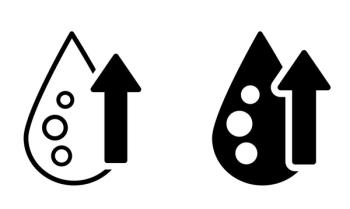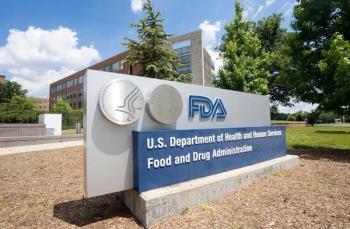
ACC: Dyslipidemia Treatment Often Requires Combination Approach
ATLANTA -- Combination therapy may be needed to reach lipid lowering goals, researchers reported here.
ATLANTA -- Combination therapy may be needed to reach lipid lowering goals, researchers reported here.
"In the absence of a lot of data on outcomes, there are some things that are absolute indications for combination therapies," said Alan Brown, M.D., medical director of the Midwest Heart Disease Prevention Center in Naperville, Ill. Dr. Brown discussed strategies for treating dyslipidemia at a satellite symposium supported by Reliant Pharmaceuticals held in conjunction with the American College of Cardiology meeting.
Dr. Brown said that a major indication for combination therapy is the failure to reach the goal even with aggressive statin therapy. For example, he said that only 20% of patients reached the goal in a small open-label titration study that he conducted in 1998. In that study patients were titrated to 80 mg/d of Lipitor (atorvastatin.)
He suggested that the situation is probably worse in general practice because most patients -- 76% in one diary study -- remain on their initial dose. "The most common dose is 20 mg/d and patients never get titrated up," he said.
Zetia (ezetimibe), which blocks absorption of cholesterol in the intestine, has a potential role as monotherapy for patients needing small reductions in LDL cholesterol, but it may also be useful in combination with a statin for patients who fail to reach the goal on statin monotherapy.
A central message, he said, is that combination therapy may be more effective, with fewer side effects, than high-dose monotherapy in lowering LDL.
Combination therapy will also allow patients to meet both an LDL target and a non-HDL target, where non-HDL is defined as total cholesterol minus HDL
For patients with metabolic syndrome, the National Cholesterol Education Program's ATP III sets treatment goals at an LDL cholesterol level of less than 70 mg/dL and a non-HDL cholesterol of less than 160 mg/dL if triglycerides are above 200 mg/dL.
The therapeutic options available to achieve these goals include statins, which lower LDL significantly, raise HDL slightly and lower triglycerides slightly; bile acid resins which lower LDL slightly, increase HDL slightly and have little effect on triglycerides; nictonic acid which can significantly increase HDL and significantly lower triglycerides but lower LDL only slightly; fibrates which have equivocal effects on LDL, raise HDL and lower triglycerides significantly; and finally, fish oil or omega-3 fatty acids, which lower LDL slightly, raise HDL and lower triglycerides.
Depending on how they're combined, he said, those agents can have positive effects on lipid metabolism. "The beauty is that when you combine these agents, you get combined effects," he said.
For instance, statins and nicotinic acid would lower LDL significantly, raise HDL significantly, and lower triglycerides significantly.
Of interest, as small subset of patients called "niacin hyper-responders" can achieve more than a 50% increase in HDL cholesterol levels, said Leonard Keilson, M.D., of the Maine Center for Lipids and Cardiovascular Health, in Scarborough, Me.
Dr. Keilson, who reported the findings in a poster, analyzed long term results form 270 patients treated at his center.
Thirteen patients (5%) had their HDL levels increase by more than 50% over baseline values. He said, however, that the study was limited by its retrospective, single-center design, which he likened to "a case report."
Nonetheless, he said, "as a result of understanding the nature of this particular population, we may wind up digging into the genes that regulate (in this group of people) their metabolism and why their response is so extreme," he said.
Dr. Keilson reviewed electronic medical records of more than 11,000 patients treated over a 15-year period.
The 13 "hyper-responders" had an average HDL level of 32.2 mg/dL at baseline, and a mean triglyceride level of 288 mg/dL. They averaged about four office visits a year over any five-year period; the median length of treatment was seven years.
HDL levels increased between 52% and 153%; the median increase was 64% and the average increase was 90%, Dr. Keilson reported. In other studies, niacin and extended release niacin have been reported to raise HDL levels by about 30% over baseline, he said.
On average, triglyceride levels fell 43% from baseline and the patients' weight fell, on average, about 4%.
Interestingly, 69% of the patients were treated with statins throughout the period they were taking niacin and 100% were treated with statins for at least two years.
While a large proportion of patients find it difficult to tolerate niacin, Dr. Keilson said compliance may be a matter of explaining side effects clearly to patients. He said he tells them they are likely to experience a "sunburn-like reaction" and not to worry.
"I joke that it's flushing out the cholesterol out of their system," Dr. Keilson said in an interview.
A combination that may be better tolerated is statin plus fish oil, said Dr. Brown. He noted that omega-3 fatty acids have been taken for years, and are generally well-tolerated. Doctors now have the option of prescribing a pharmacologically prepared drug, sold under the brand name Omacor. Only Omacor -- and not over-the-counter supplements -- has been shown to reduce triglycerides, he said.
Dr. Brown concluded that statin therapy should be the initial approach in high risk patients, even with mixed dyslipidemia (unless triglycerides are higher than 500 mg/dL). Patients with very high triglycericides (more than 500 mg/dL) should be treated first with fibrates or nictonic acid.
Newsletter
Enhance your clinical practice with the Patient Care newsletter, offering the latest evidence-based guidelines, diagnostic insights, and treatment strategies for primary care physicians.




